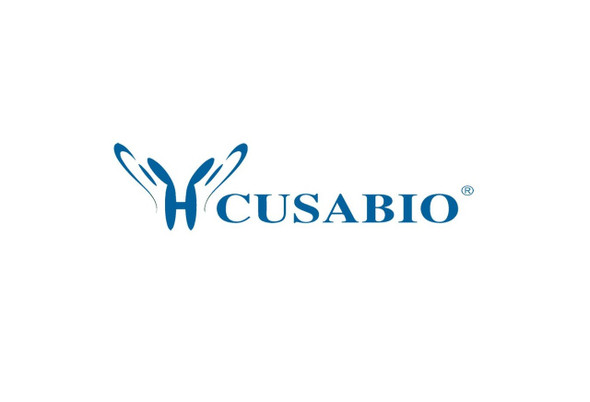Cusabio Human Recombinants
Recombinant Human Phospholipid transfer protein (PLTP) | CSB-YP018212HU
- SKU:
- CSB-YP018212HU
- Availability:
- 25 - 35 Working Days
Description
Recombinant Human Phospholipid transfer protein (PLTP) | CSB-YP018212HU | Cusabio
Alternative Name(s): Lipid transfer protein II
Gene Names: PLTP
Research Areas: Transport
Organism: Homo sapiens (Human)
AA Sequence: EFPGCKIRVTSKALELVKQEGLRFLEQELETITIPDLRGKEGHFYYNISEVKVTELQLTSSELDFQPQQELMLQITNASLGLRFRRQLLYWFFYDGGYINASAEGVSIRTGLELSRDPAGRMKVSNVSCQASVSRMHAAFGGTFKKVYDFLSTFITSGMRFLLNQQICPVLYHAGTVLLNSLLDTVPVRSSVDELVGIDYSLMKDPVASTSNLDMDFRGAFFPLTERNWSLPNRAVEPQLQEEERMVYVAFSEFFFDSAMESYFRAGALQLLLVGDKVPHDLDMLLRATYFGSIVLLSPAVIDSPLKLELRVLAPPRCTIKPSGTTISVTASVTIALVPPDQPEVQLSSMTMDARLSAKMALRGKALRTQLDLRRFRIYSNHSALESLALIPLQAPLKTMLQIGVMPMLNERTWRGVQIPLPEGINFVHEVVTNHAGFLTIGADLHFAKGLREVIEKNRPADVRASTAPTPSTAAV
Source: Yeast
Tag Info: N-terminal 6xHis-tagged
Expression Region: 18-493aa
Sequence Info: Full Length of Mature Protein
MW: 55.1 kDa
Purity: Greater than 90% as determined by SDS-PAGE.
Relevance: Facilitates the transfer of a spectrum of different lipid molecules, including diacylglycerol, phosphatidic acid, sphingomyelin, phosphatidylcholine, phosphatidylglycerol, cerebroside and phosphatidyl ethanolamine. Essential for the transfer of excess surface lipids from triglyceride-rich lipoproteins to HDL, thereby facilitating the formation of smaller lipoprotein rnants, contributing to the formation of LDL, and assisting in the maturation of HDL particles. PLTP also plays a key role in the uptake of cholesterol from peripheral cells and tissues that is subsequently transported to the liver for degradation and excretion. Two distinct forms of PLTP exist in plasma: an active form that can transfer PC from phospholipid vesicles to high-density lipoproteins (HDL), and an inactive form that lacks this capability.
Reference: Complete cDNA encoding human phospholipid transfer protein from human endothelial cells.Day J.R., Albers J.J., Lofton-Day C.E., Gilbert T.L., Ching A.F.T., Grant F.J., O'Hara P.J., Marcovina S.M., Adolphson J.L.J. Biol. Chem. 269:9388-9391(1994)
Storage: The shelf life is related to many factors, storage state, buffer ingredients, storage temperature and the stability of the protein itself. Generally, the shelf life of liquid form is 6 months at -20?/-80?. The shelf life of lyophilized form is 12 months at -20?/-80?.
Notes: Repeated freezing and thawing is not recommended. Store working aliquots at 4? for up to one week.
Function: Facilitates the transfer of a spectrum of different lipid molecules, including diacylglycerol, phosphatidic acid, sphingomyelin, phosphatidylcholine, phosphatidylglycerol, cerebroside and phosphatidyl ethanolamine. Essential for the transfer of excess surface lipids from triglyceride-rich lipoproteins to HDL, thereby facilitating the formation of smaller lipoprotein remnants, contributing to the formation of LDL, and assisting in the maturation of HDL particles. PLTP also plays a key role in the uptake of cholesterol from peripheral cells and tissues that is subsequently transported to the liver for degradation and excretion. Two distinct forms of PLTP exist in plasma
Involvement in disease:
Subcellular Location: Secreted
Protein Families: BPI/LBP/Plunc superfamily, BPI/LBP family
Tissue Specificity: Wide tissue distribution. Placenta > pancreas > lung > kidney > heart > liver > skeletal muscle > brain.
Paythway: PPARsignalingpathway
Form: Liquid or Lyophilized powder
Buffer: If the delivery form is liquid, the default storage buffer is Tris/PBS-based buffer, 5%-50% glycerol. If the delivery form is lyophilized powder, the buffer before lyophilization is Tris/PBS-based buffer, 6% Trehalose, pH 8.0.
Reconstitution: We recommend that this vial be briefly centrifuged prior to opening to bring the contents to the bottom. Please reconstitute protein in deionized sterile water to a concentration of 0.1-1.0 mg/mL.We recommend to add 5-50% of glycerol (final concentration) and aliquot for long-term storage at -20?/-80?. Our default final concentration of glycerol is 50%. Customers could use it as reference.
Uniprot ID: P55058
HGNC Database Link: HGNC
UniGene Database Link: UniGene
KEGG Database Link: KEGG
STRING Database Link: STRING
OMIM Database Link: OMIM










